If your pond looks more like a lush carpet than a body of water, and it’s been a while since you’ve spotted any of your fish, then your algae might be an issue. Here are five easy ways to stop algae growing in your pond.
Table of Contents
Pond Algae Solutions – 5 Easy Ways to Stop Algae Growing in your Pond
If you are a fish enthusiast or you have a garden pond, then you will probably already have a love-hate relationship with algae.
When the sun is shining and your pond plants and creatures are happy, then growing algae is a constant problem. In small amounts, algae in your fish pond can help keep nitrates and other nutrients in balance, as well as adding oxygen to the water through photosynthesis.
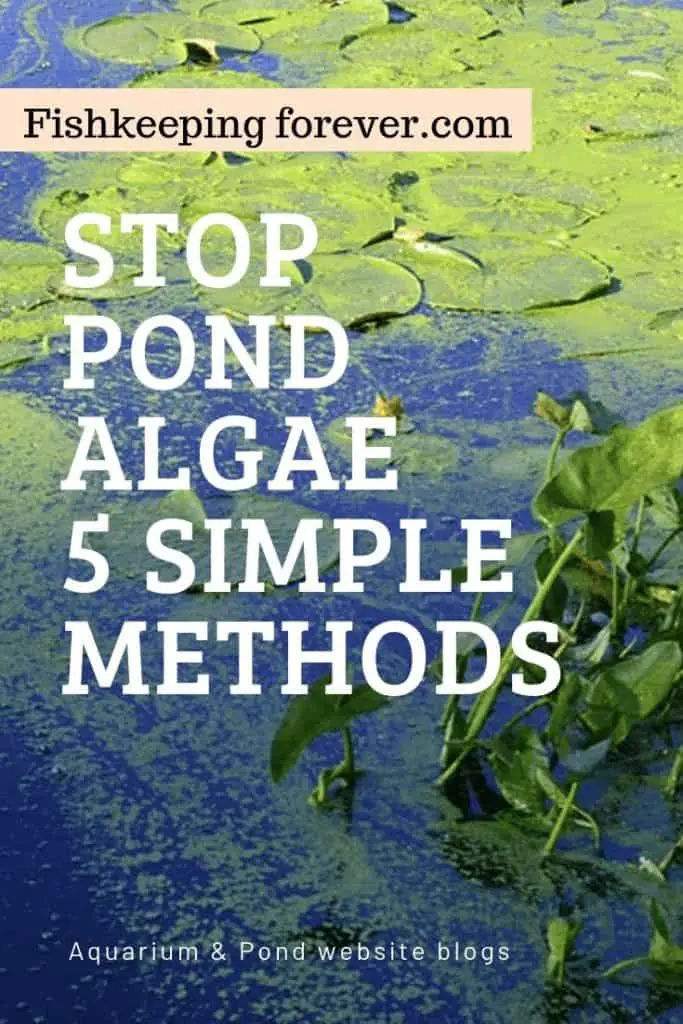
Some algae in your pond are ok and your fish and other animals will enjoy eating it, but if you let it get out of control it can quickly take over.
If your pond looks more like a lush carpet than a body of water, and it’s been a while since you’ve spotted any of your fish, then your algae might be an issue. Here are five easy ways to stop algae growing in your pond.
What are Algae anyway?
Algae is a term used to describe an aquatic organism that creates photosynthesis. They are similar to plants but don’t need normal plant parts such as roots, stems, and leaves, and in fact some have only one cell. It is actually used to refer to a range of different aquatic organisms including seaweed, kelp and pond scum which aren’t actually related to each other.
Algae come in many different forms and sizes and can be found in both fresh and saltwater and in warm climates and even at freezing temperatures.
It includes planktonic algae which are free-floating in the water and benthic algae which adhere to stones, plants, and animals.
It also includes cyanobacteria in the informal grouping, including the blue-green algae that you will be familiar. Algae isn’t just algae as it turns out.
Types of Pond Algae
There are a number of different kinds of algae, some of which are good for your pond, while others are problematic.
Blue-Green Algae or Green Water – single-celled algae that float on the surface of the pond. These are tiny and in abundance, with up to five million cells per millilitre of pond water.
String Algae – this is a filamentous species which grows in strands or strings and stick to rocks and other surfaces under the water.
One of the main characteristics of algae, and why pond enthusiasts despise it so much, is the incredible speed at which it reproduces.
Read our article: What is a wildlife pond?
The algae in your pond grow because of warm conditions and the right balance of nutrients in the water. Sunshine, in combination with a lack of filtration too much waste causing a high pH level and any standing patches of water will cause algae to bloom.
In the sun algae produce oxygen which is good for the water. It also grows and reproduces at its highest rate in the sun however, in which case it will take over the pond. At night, algae respire which means they use up the sugars and oxygen in the water and form carbon dioxide, further reducing the oxygen in the pond.
So, it’s all about balance.
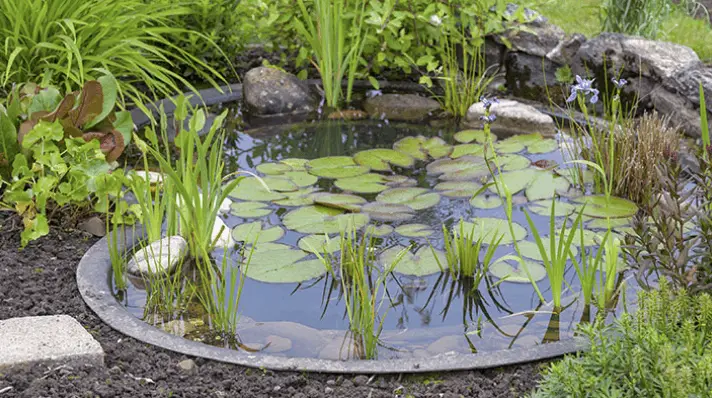
How Much Algae is Too Much?
You may have a gorgeously clear fish pond one day and then a lush shag pile of green algae can appear almost overnight. What should you do?
This is called an algal bloom and can happen in a burst of warm weather or direct sunlight, when combined with the fish waste already in the pond. When this happens algae can take over your pond somewhat and needs to be kept within moderation.
It is normal in a balanced pond to have some algae growth, but too much not only looks bad it is isn’t good for the fish. Too much algae will remove oxygen from the water.
Algae on the bottom and sides of the pond is fine, but you need to limit it from the surface.
Pond Algae Solutions – 5 Easy Ways to Stop Algae Growing in your Pond
Provide Lots of Shade
Direct sunlight on your pond is one reason why algae flourishes, so an easy way to combat it to keep much of your pond shaded. A healthy number of plants in and around the pond can be part of this, as can shading from a tree, shade-sail or a gazebo.
Plants are also helpful in the pond as they absorb the nutrients that algae feed on, leaving little left for algae growth as well as putting much-needed oxygen into the water.
The right plants may also help to filter the water. Use fast-growing plants like water lettuce or water hyacinth to feed on the nutrients in the water.
Try planting marginal plants around the edges and in the shallow sections of your pond, invest in floating plants like lilies and lotus, and also add submerged plants like anacharis and hornwort by using soil baskets or containers under the surface.
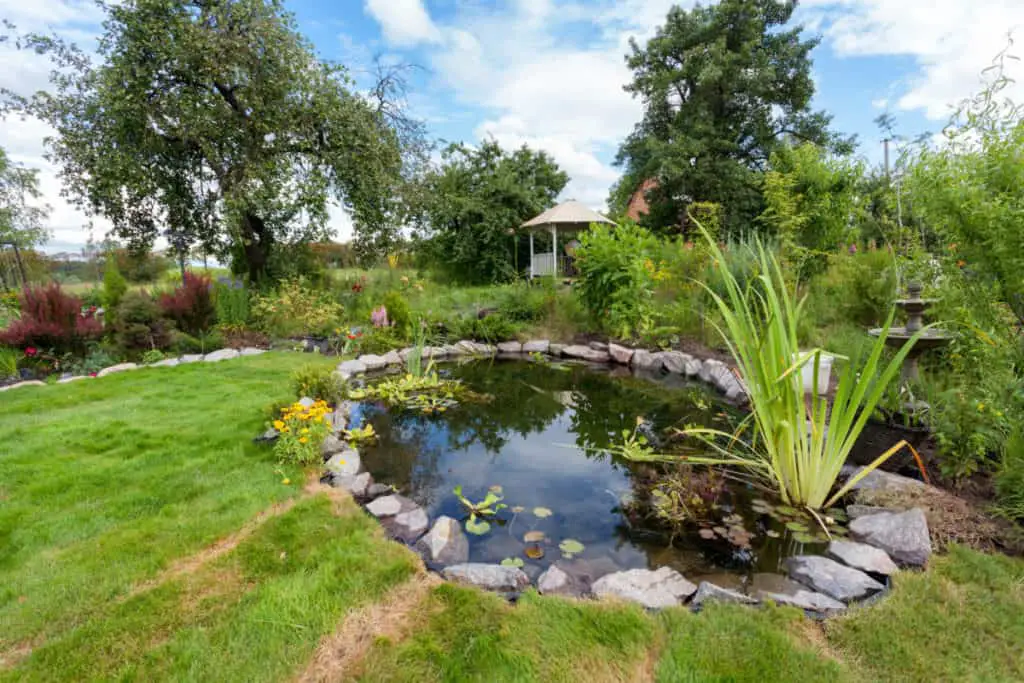
Keep Water Aerated and Filtered
Select the right strength of filter for your pond, making sure that it is created to suit the volume of water in your pond. A proper working filter will help to keep the water clean, while a water pump will keep it aerated. You should regularly clean and maintain your filter.
Aerating your water keeps it moving which discourages algae build-up, and also adds oxygen to the pond. The pump for your pond should circulate the whole volume of the pond’s water at least every hour, so make sure that that you invest in the right one.
You could also consider adding a cool water feature like a small fountain or waterfall to help aerate the water and keep it moving.
Ponds encourage algae growth when they are warm and stagnant. One of the best ways to combat algae is to keep your water cool and keep it fresh – so replace portions of the water often as well as making sure your filter and pump are working well.
Adding depth to your pond will also help to keep it cool in the warmer months.
Remove Waste Regularly and Keep Your Pond Clean
Algae thrive on the magic mix of water, sunshine and nutrient waste. As well as keeping the water cool and shaded to reduce sunlight on the surface, you can keep algae at bay by ensuring the amount of nutrient waste in the water is as low as possible.
One of the first ways to reduce fish waste is to not overcrowd your pond. This will also make for much happier fish, so consider the size, number and breeds of your pond community to make sure that your fish have enough space to thrive.
Feed your fish the right food and the right amounts. If you overfeed your fish then you will have deposits of rotting food adding to the waste in the pond. If you feed them the wrong kind of food they will only absorb some of the nutrients into their system and expel much of the food as fish waste.
Remove any uneaten food after 2-3 minutes. Do a regular check for anything rotting in your pond as well.
Pond scum or blue-green algae is actually many tiny separate organisms, so can’t really be controlled by nets or scoops. You can get rid of string or filamentous algae by scooping it out or blasting it off rocks using a high-powered garden hose.
Using pea gravel as the substrate for your pond and aquatic plants is another great help. Pea gravel helps to filter the water and catch debris, and also forms the perfect bed for beneficial bacteria in the pond.

Some fish will clean your pond
Invest in fish, plants and other creatures that love to feed on algae. Happy water-cleaning creatures include:
Siamese algae eaters, which are a freshwater carp with huge appetites. They eat algae both green and red and clean up pond scum as well. They may eat small fish like minnows but pair well with larger koi and goldfish breeds.
Common plecostomus, which are voracious suckermouth catfish. These can grow to be quite large so you need a bigger pond to house them (at least 3500 litres). You only really need one of these, but they get along well with the rest of the pond community.
Pond loach will clean up algae, pond scum and also insects as well. They are quite sociable fish who get along with koi and goldfish.
Black Japanese trapdoor pond snails. All snails are great for cleaning ponds, but smaller snails don’t survive well in the colder months and in the warmer months can lay way too many eggs. Black Japanese trapdoor pond snails are bigger and hardier – they will do the cleaning you need and they give birth to individual babies, so will maintain their population balance nicely.
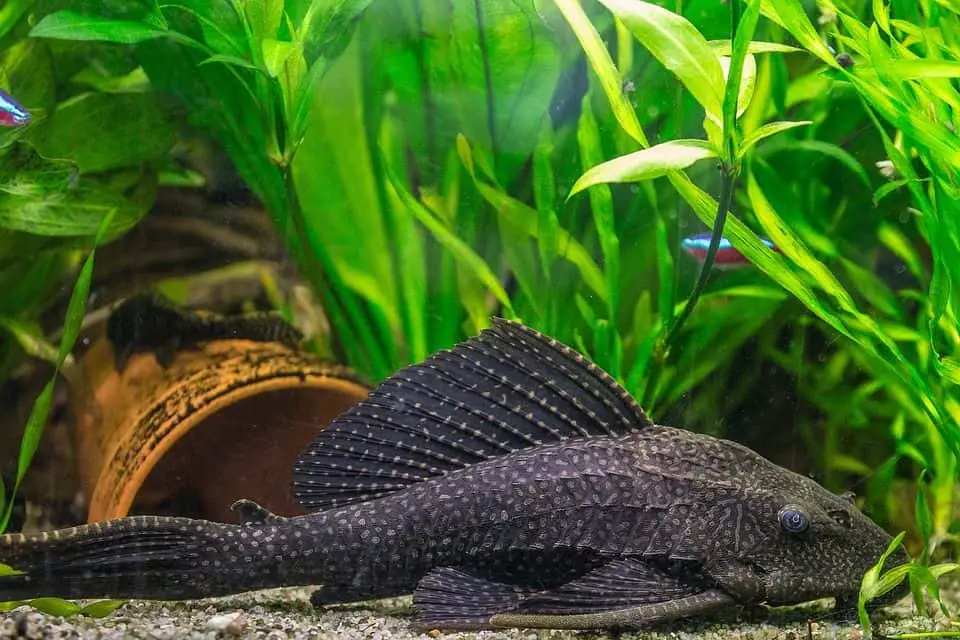
Increase your Pond’s Beneficial Bacteria
Managing algae is all about balance. You can combat the growth of algae by reducing the nutrient waste that they love to feed on, and also by increasing the number of beneficial bacteria in the pond.
Healthy bacteria help the fish and plants in your pond, but also aid in the fight against rampant pond scum. They help with the decomposition of any organic material, helping to break things down and prevent build-up in the water. This stops the water becoming stagnant and also helps to cycle nutrients throughout the pond. They also cycle harmful toxins before these affect your fish, including ammonia and nitrites.
Beneficial bacteria compete with algae for the nutrients in the water, so by having them, you will discourage algae growth.
Having lots of rocks and surface areas for beneficial bacteria to grow on will help, as will keeping your water aerated, but one of the easiest ways to increase the beneficial bacteria in your pond is to add bacterial products.
You should test the water often for levels and add beneficial bacteria as needed. You can buy products such as these to help:
Helix Life Support is a product that we use all the time when building new ponds. It instantly add millions of helpful bacteria to ensure your pond is fighting dirt, debris and fish waste from day one. The microbes in this liquid blend are designed to eliminate ammonia, reduce sludge and fish waste, and improve overall water quality and clarity.
Add Some Extra Control Mechanisms
UV Clarifiers
You can buy ultraviolet clarifiers to combat pond scum – this works like an extra filter that the water passes through which contains a UV light. The light destroys the reproductive ability of the individual algae cells so they can’t bloom further, and the filter then removes them from the water.
Click here for more information and prices.
Barley
You can float sachets or pellets of barley straw in your pond to help filtration, or add barley in liquid form. Barley straw helps by reducing extra nutrients in the water, the same as plants do, to reduce algae and pond scum growth.
Pond Scum Vacuum
If you have a few extra dollars to splash around, you can also buy nifty products like this awesome pond scum vacuum for your pond. Perfectly safe for use outdoors and around water these pond vacuums are a great way to effortlessly remove unwanted leaves and debris.
Click here for more information and prices.
Algicides
These are chemical treatments that you can buy online and add to the water to control algae. They should be a last resort in your garden pond, and you should thoroughly research any product before using it.
Some are regulated in the UK because they may damage local flora and fauna if the chemicals get into natural waterways.
Pond Algae Solutions – In a Nutshell
You can manage the algae in your pond by keeping the water shaded, cool, clean and moving, and by taking steps to reduce the nutrient waste in the water on which they thrive.
You can avoid algae by:
- Providing at least partial shade for the pond
- Having lots of healthy, helpful plants
- Avoiding standing water by having a fountain or waterfall
- Having a proper working pump and filter for your pond
- Manage nutrient waste and pH levels in the water
- Having deeper spots to lower the water temperature
- Adding new water (up to 10%) in the pond regularly
- Encouraging the growth of beneficial bacteria in the pond.
If you find yourself seeing green, keep this article handy to help you combat algae in the future.
- How many eggs do Koi lay? How many and how often
- How long are Koi fish pregnant? Live Spawning or egg Layers
- Do Koi fish Eat Mosquito Larvae? Cool Facts!
- American Flagfish (Jordanella floridae) Complete Care Guide
- How to Oxygenate a Pond | 3 Ways to Oxygenate a Fish Pond
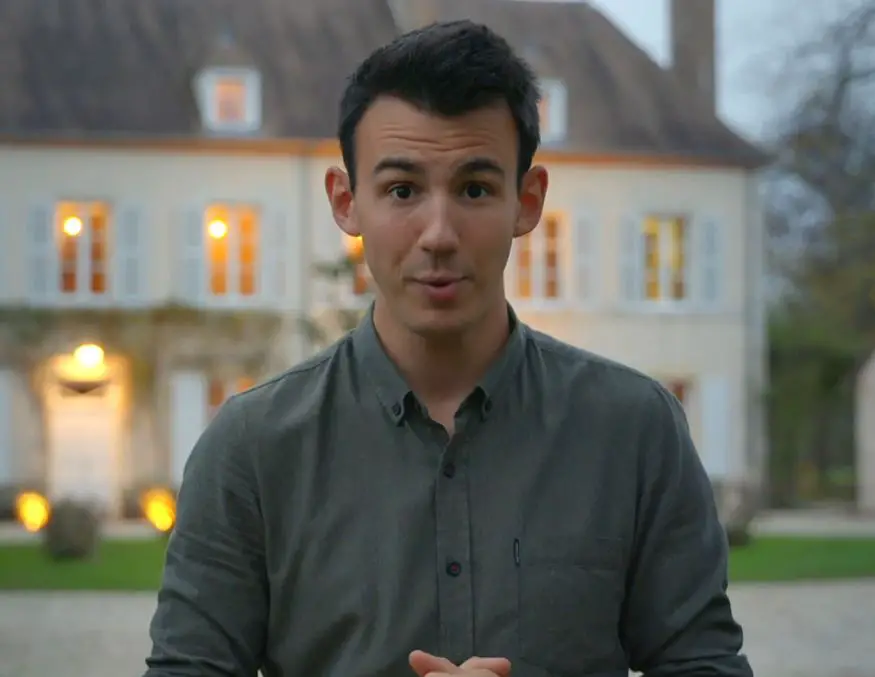
I have been working in the tropical fish industry for over 30 years now and I’m still learning. Everyday is a school day in this hobby. In my spare time I play golf very badly!



